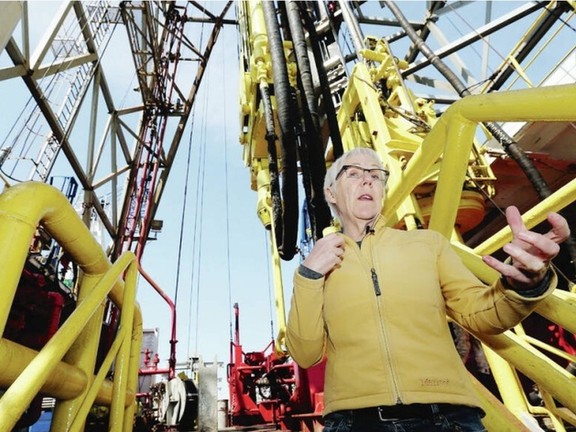The Cascadia Basin, an area more than 100 kilometres off the coast of the Island on the Juan de Fuca Plate, is one of the most studied ocean floors in the world
• Victoria Times Colonist • Sept 27, 2021

Kate Moran, president of Ocean Networks Canada and lead on the Solid Carbon Project. PHOTO BY ADRIAN LAM, TIMES-COLONIST /PNG
VICTORIA — Scientists warn that human-caused greenhouse gas emissions are driving the Earth toward a point of no return when it comes to the dire consequences of climate change.
But what if you could pump those gases into rock deep below the ocean floor?
The University of Victoria and its Pacific Institute for Climate Solutions and Ocean Networks Canada divisions are preparing a demonstration project off the coast of Vancouver Island to do just that. The demo, which could be ready for the Cascadia Basin by 2024, could eventually lead to sequestering gigatonnes of emissions around the globe that are driving climate change.
Technology is now being refined to outfit a floating drilling platform with turbines that would gather carbon dioxide from the atmosphere and push it through a pipe to holes bored into the basalt formation. There, scientists say, CO2 would react with minerals and crystallize into rock over time, with hundreds of metres of sediment acting as a sealant.
Since about 90% of the ocean crust is basaltic rock — a porous formation from cooling volcanic lava — researchers say locking up carbon this way could put a “serious dent” in the billions of tonnes of emissions caused by humans each year. It’s currently estimated that human activity adds about 51 gigatons (51 billion tons) of greenhouse gases to the atmosphere each year.
“The potential is enormous,” says Kate Moran, president of Ocean Networks Canada and lead on the Solid Carbon Project. She said many of the systems that will be used in the demonstration already exist, such as the drilling technology, pipelines and injection wells and carbon-capture technology — not to mention human resources in the oil and gas industry.
Read more about this CDR pilot project
